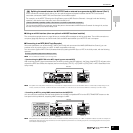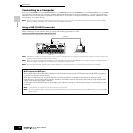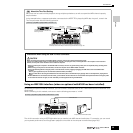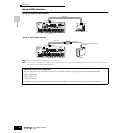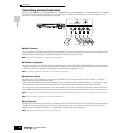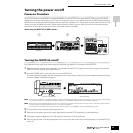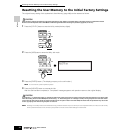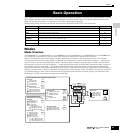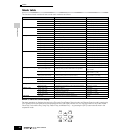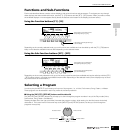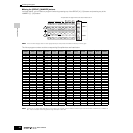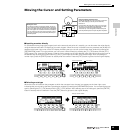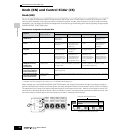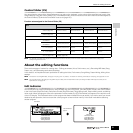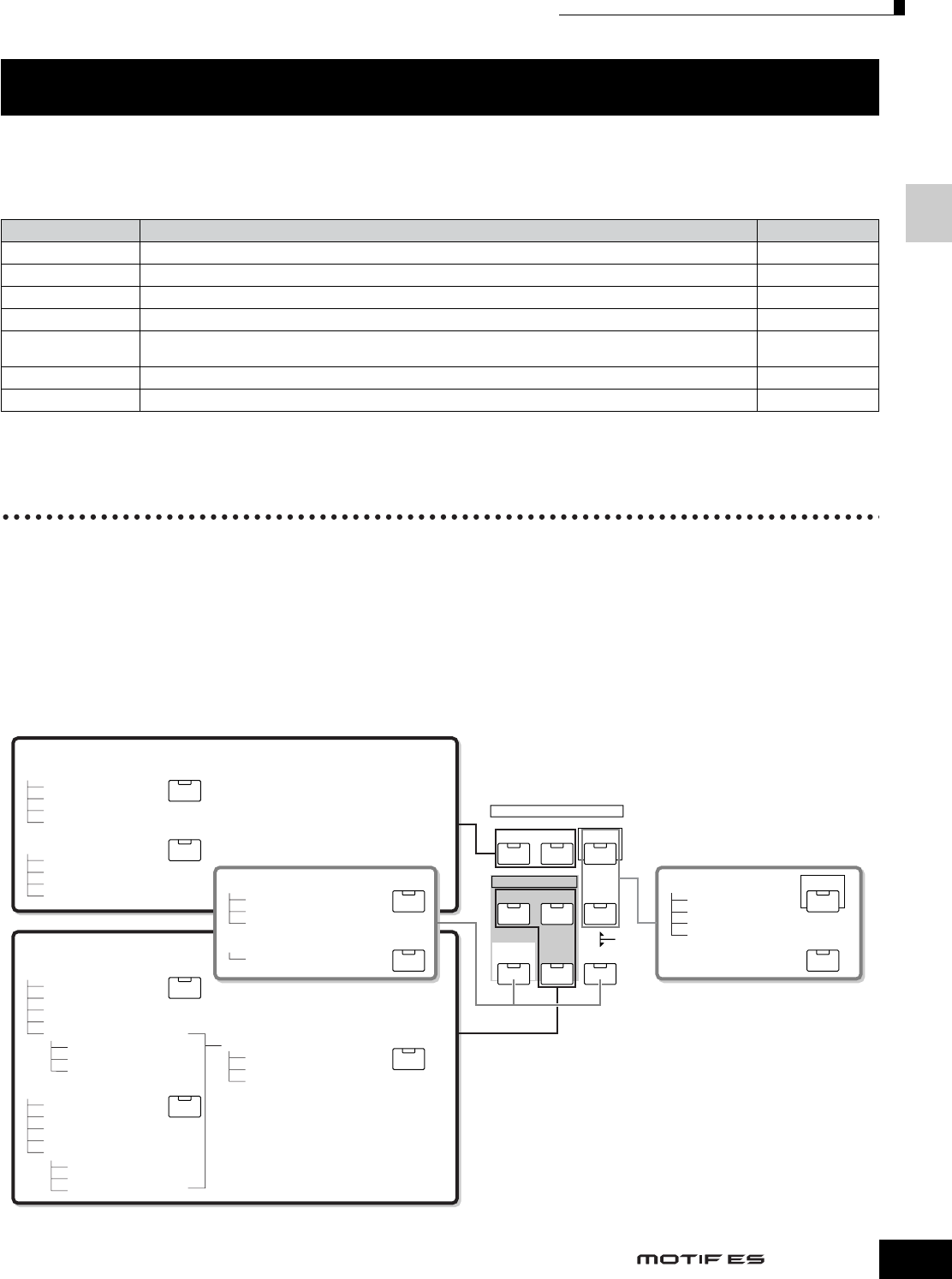
Modes
45
Owner’s Manual
Basic Operation
In this section, we’ll take a look at the fundamental operating conventions of the MOTIF ES. Here, you’ll learn the basics – how to
select modes, call up the various functions, change settings, and edit parameter values. Take time to familiarize yourself with
these nuts-and-bolts operations, and you’ll be on your way to mastering the instrument.
Before reading further, familiarize yourself with the basic terms used with the MOTIF ES in the chart below.
Modes
Mode Structure
This synthesizer is organized into various modes, each covering a different set of operations and functions.
Keep in mind that there are two basic types of modes, depending on the status of the tone generator block. The first type
includes the Voice and Performance modes, and the internal tone generator is used in single timbre operation — meaning that
only one Voice, or one channel of MIDI data is used. The second type includes the Song and Pattern modes, and the internal
tone generator is used in multi-timbral operation — meaning that several Voices, or multiple MIDI channels are used. Along with
each of these types are sub modes — the Sampling mode and the Utility mode. Remember that the particular displays and
parameters in these two modes differ depending on which type of mode (Voice/Performance or Song/Pattern) was active before
calling up the sub-mode. In addition to the above mentioned, there are two special modes. The Master mode lets you memorize
your desired settings in each mode (Voice/Performance/Song/Pattern) and recall them instantly anytime you need them with a
single button. The File mode lets you manage your created data.
Basic Operation
Term Description Page
Voice Musical instrument voices 158
Performance A program in which multiple Voices are combined in a layer 158
Song Music data consisting of MIDI events 166
Pattern Rhythm pattern data which consist of MIDI events used for looped playback 167
Sampling
The function that lets you record the audio data (such as your own voice and CD playback sound) and play
those sounds just like any other synthesizer’s Voice.
172
Master A program which lets you register the settings in each mode – Voice, Performance, Song, and Pattern 136
File A collection of settings for storing and managing your created data 186
VOICE
SONG
PERFORM MASTER
PATTERN FILE
MODE
SEQUENCER
INTEGRATED
SAMPLING
MIXING UTILITY
DEMO
VOICE
PERFORM
SONG
PATTERN
MIXING
MASTER
FILE
INTEGRATED
SAMPLING
UTILITY
Voice mode
Voice Play mode
Voice Edit mode
Voice Job mode
Voice Store mode
Performance mode
Performance Play mode
Performance Edit mode
Performance Job mode
Performance Store mode
Master mode
Master Play mode
Master Edit mode
Master Job mode
Master Store mode
File mode
Keyboard Playback mode (single timbre tone generator)
Sampling mode
Sampling Record mode
Sampling Edit mode
Sampling Job mode
Utility mode
Utility Job mode
Song mode
Song Play mode
Song Record mode
Song Edit mode
Song Job mode
Song Mixing mode
Song Mixing Edit mode
Song Mixing Job mode
Song Mixing Store mode
Pattern mode
Pattern Play mode
Pattern Record mode
Pattern Edit mode
Pattern Job mode
Pattern Mixing mode
Pattern Mixing Edit mode
Pattern Mixing Job mode
Pattern Mixing Store mode
Keyboard Playback mode
(multi-timbral tone generator)
(Mixing Voice mode)
Mixing Voice Edit mode
Mixing Voice Job mode
Mixing Voice Store mode



